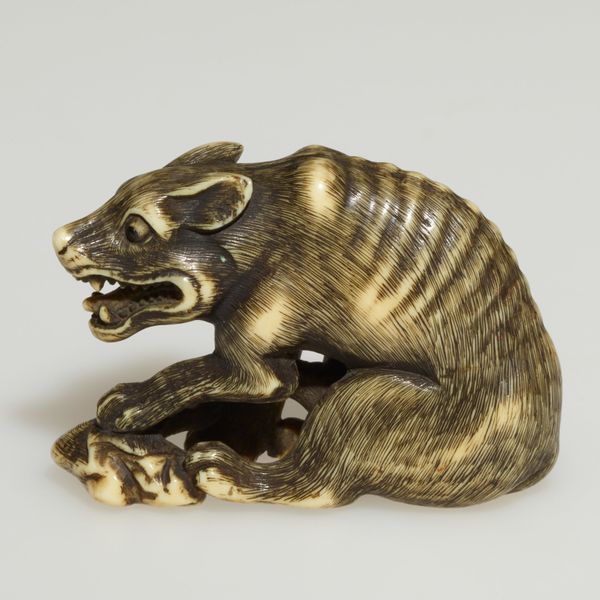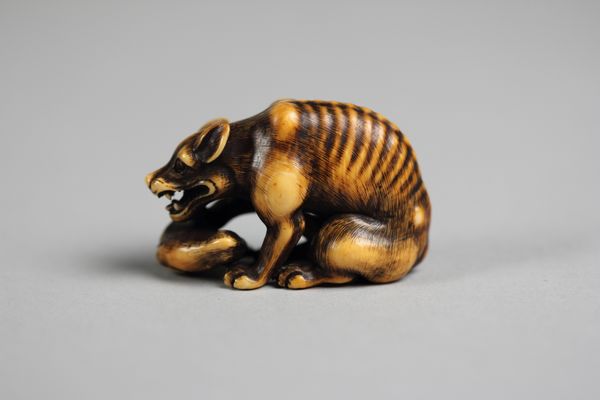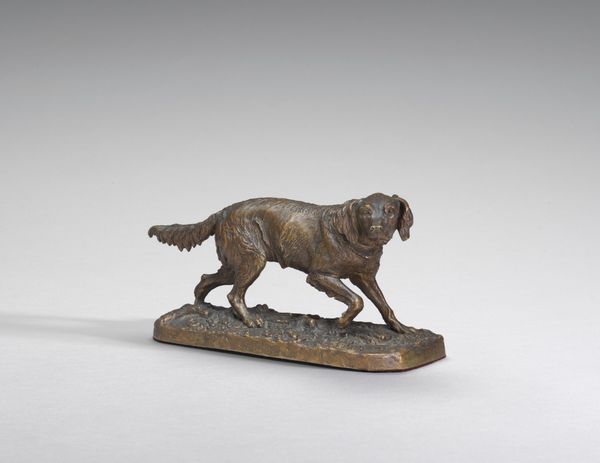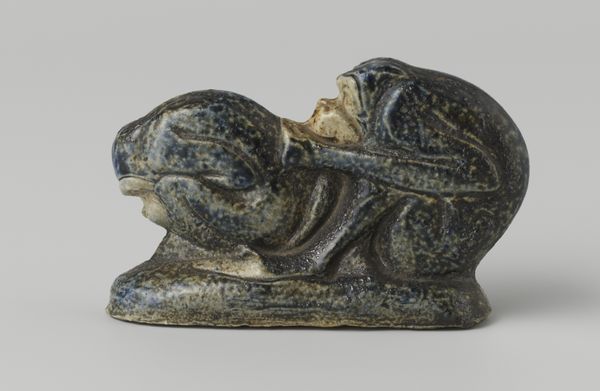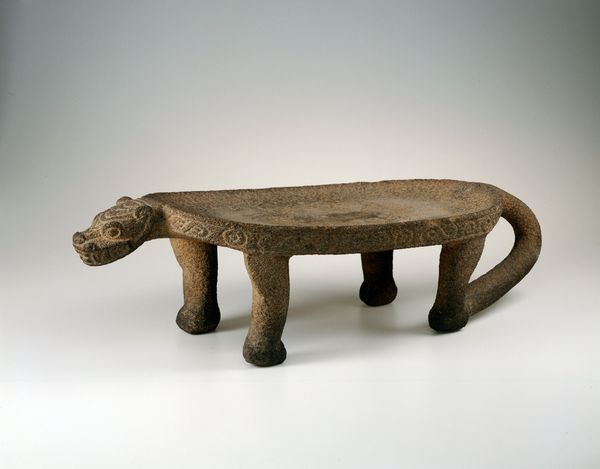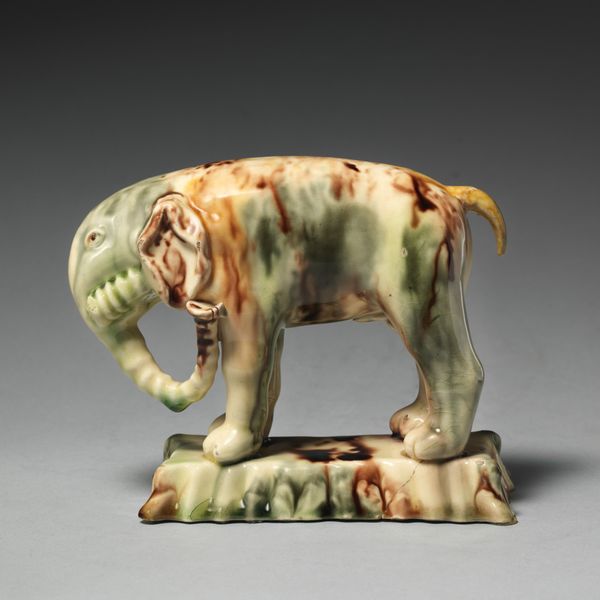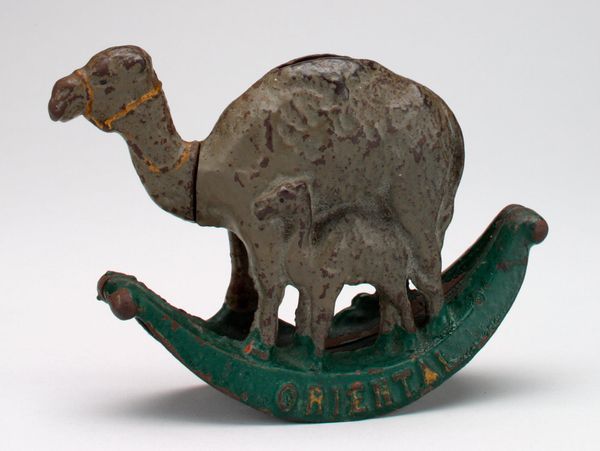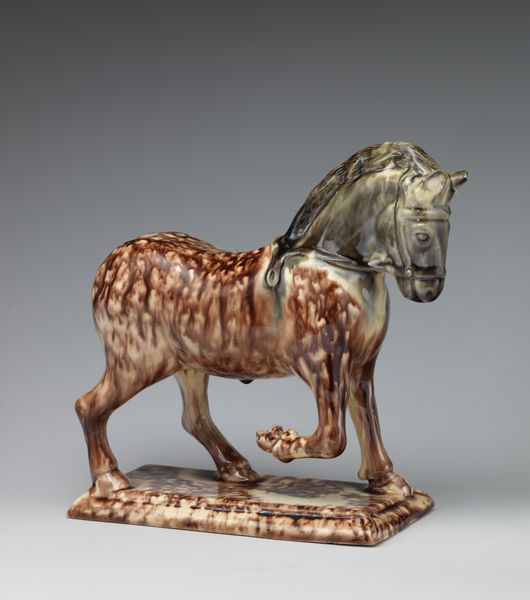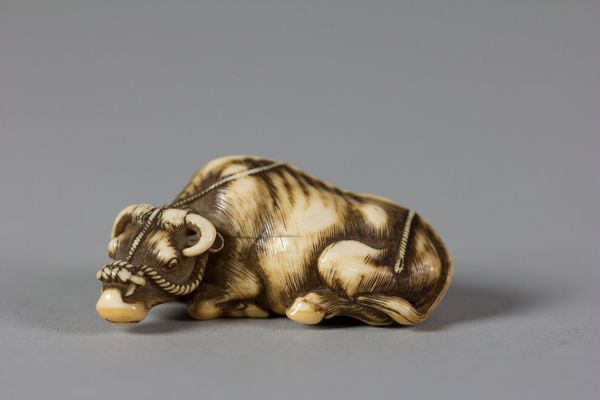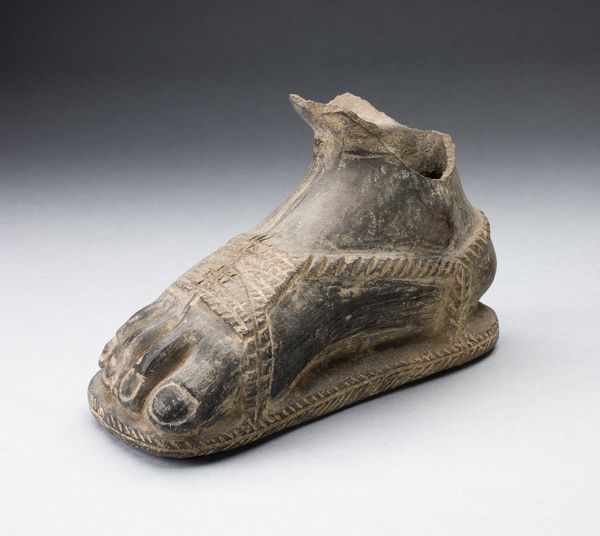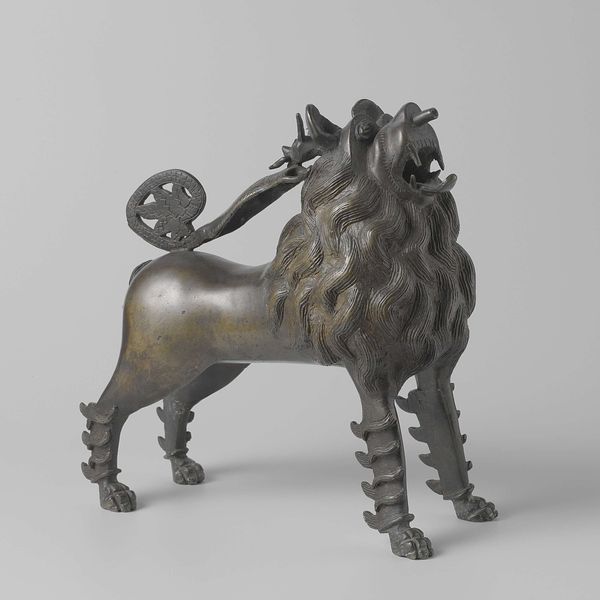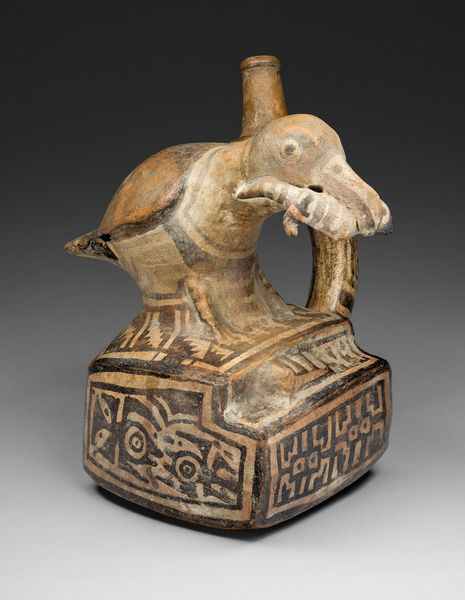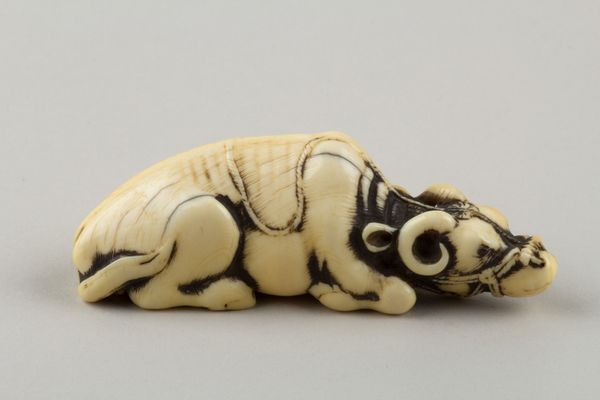
ceramic, sculpture
#
art-nouveau
#
animal
#
sculpture
#
ceramic
#
figuration
#
sculpture
Dimensions: height 11.0 cm, width 18.3 cm
Copyright: Rijks Museum: Open Domain
Editor: We’re looking at "Magelhaengans," a ceramic sculpture of a goose crafted around 1900 by Joseph Mendes da Costa, now at the Rijksmuseum. There's a charming stillness to it. What can you tell us about it? Curator: The goose, as a visual symbol, has incredible depth. Think of its global presence, the domestic familiarity juxtaposed against its migratory journeys. It links earth and sky, home and faraway places, doesn't it? Mendes da Costa created this piece during the Art Nouveau period, and we can feel its stylization here. The streamlined form is certainly modern, but its connection to nature anchors it in older traditions. Editor: That's fascinating. I hadn't considered that connection. Are there other ways the artist incorporates symbolism? Curator: Look at the goose's posture—its head lowered, seemingly drinking or pecking. This symbolizes humility, a communion with the earth. Do you notice how the ceramic glaze emphasizes the patterns on its feathers? It suggests a deep engagement with natural form, yet translated through human craft and perception. What emotions do the textures and colours evoke for you? Editor: The textures create a sense of calm, and the muted colors feel very grounded. Curator: Exactly. Even today, we respond to the work's dual presence: a realistic creature imbued with thoughtful, deeper meanings. The goose stands as a timeless emblem, shaped by art. Editor: I appreciate the focus on the goose's presence across different times. Thank you! Curator: Indeed, observing with curiosity enriches our understanding. It's all about seeing, and feeling, that history within art.
Comments
No comments
Be the first to comment and join the conversation on the ultimate creative platform.
